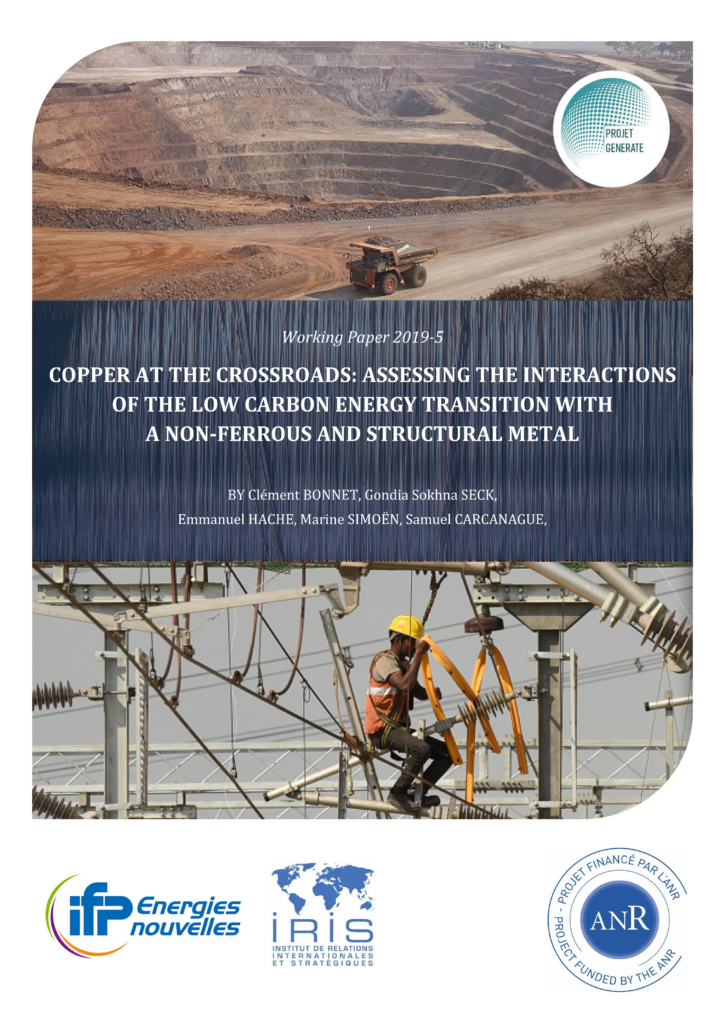Notes / Énergie et matières premières
11 juillet 2019
Copper at the crossroads: assessing the interactions of the low carbon energy transition with a non-ferrous and structurous metal

The aim of this article is to assess the impact of copper availability on the energy transition and to answer the question whether copper could become critical to the power and the transport sectors due to the high copper content of low-carbon technologies compared to conventional technologies. In order to assess the copper availability by 2055, we rely on our linear programming world energy-transport model, TIAM-IFPEN. We conduct two climate scenarios (2°C and 4°C) with two mobility scenarios implemented with a recycling chain. . The penetration of low-carbon technologies in the transport and energy sectors (electric vehicles and low-carbon power generation technologies) tends to significantly increase copper demand by 2055. In order to investigate how the tension over copper resources can be reduced in the energy transition context, we consider several public policy drivers: a sustainable mobility and recycling practices. Results show that in the most stringent scenario, 96.1% of the copper resources known in 2010 have to be extracted. They also pinpoint the importance of China and Chile in the future copper market evolution.
Keywords: Copper, Bottom-up modeling, Energy transition, Transport sector, Power sector, Recycling
JEL Classification: Q42, R40, C62
This article received the financial support of the French National Research Agency (ANR) and is part of the GENERATE (Renewable Energies Geopolitics and Future Studies on Energy Transition) Project. It receives also funding from the French Environment & Energy Management Agency with a project dedicated to lithium




